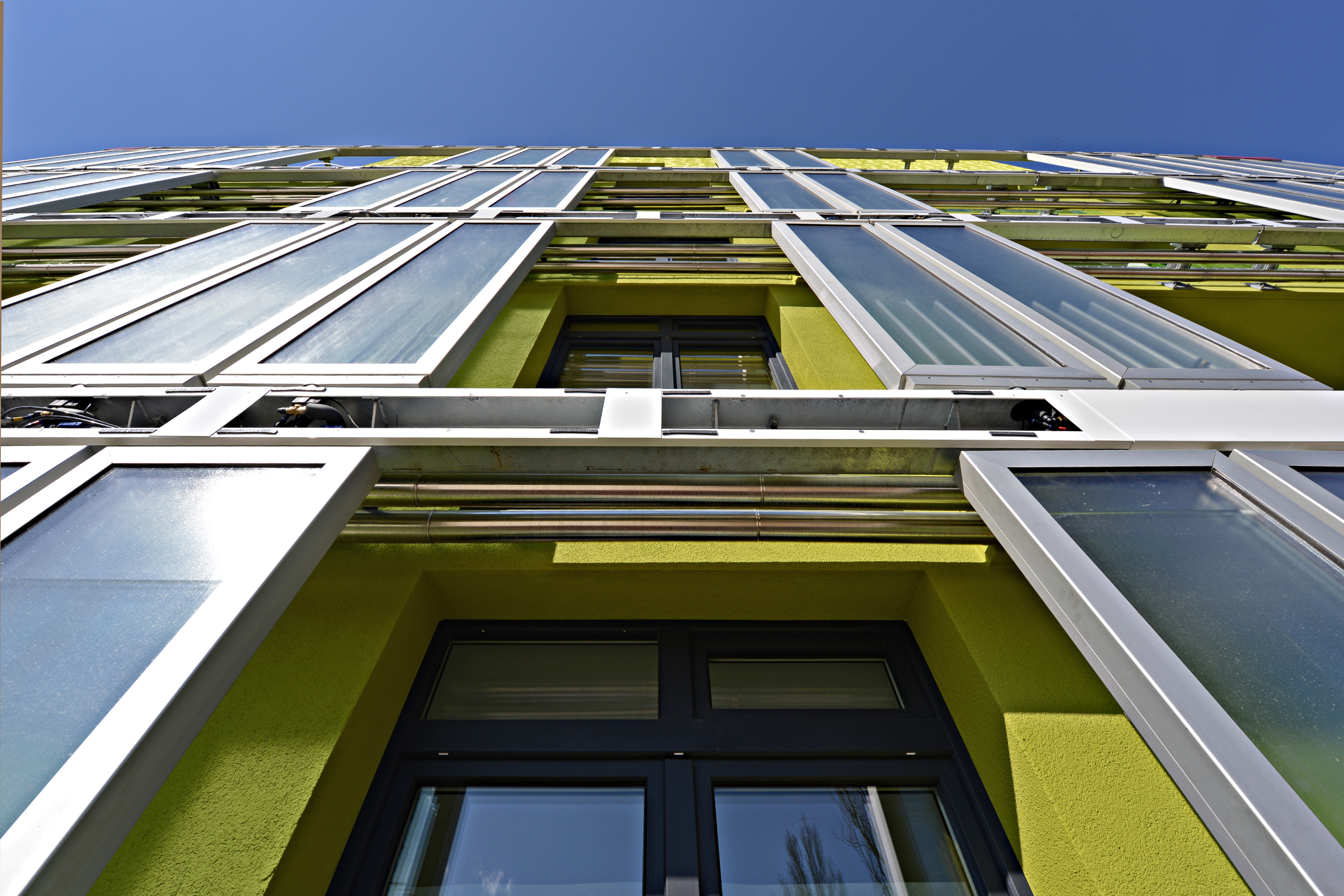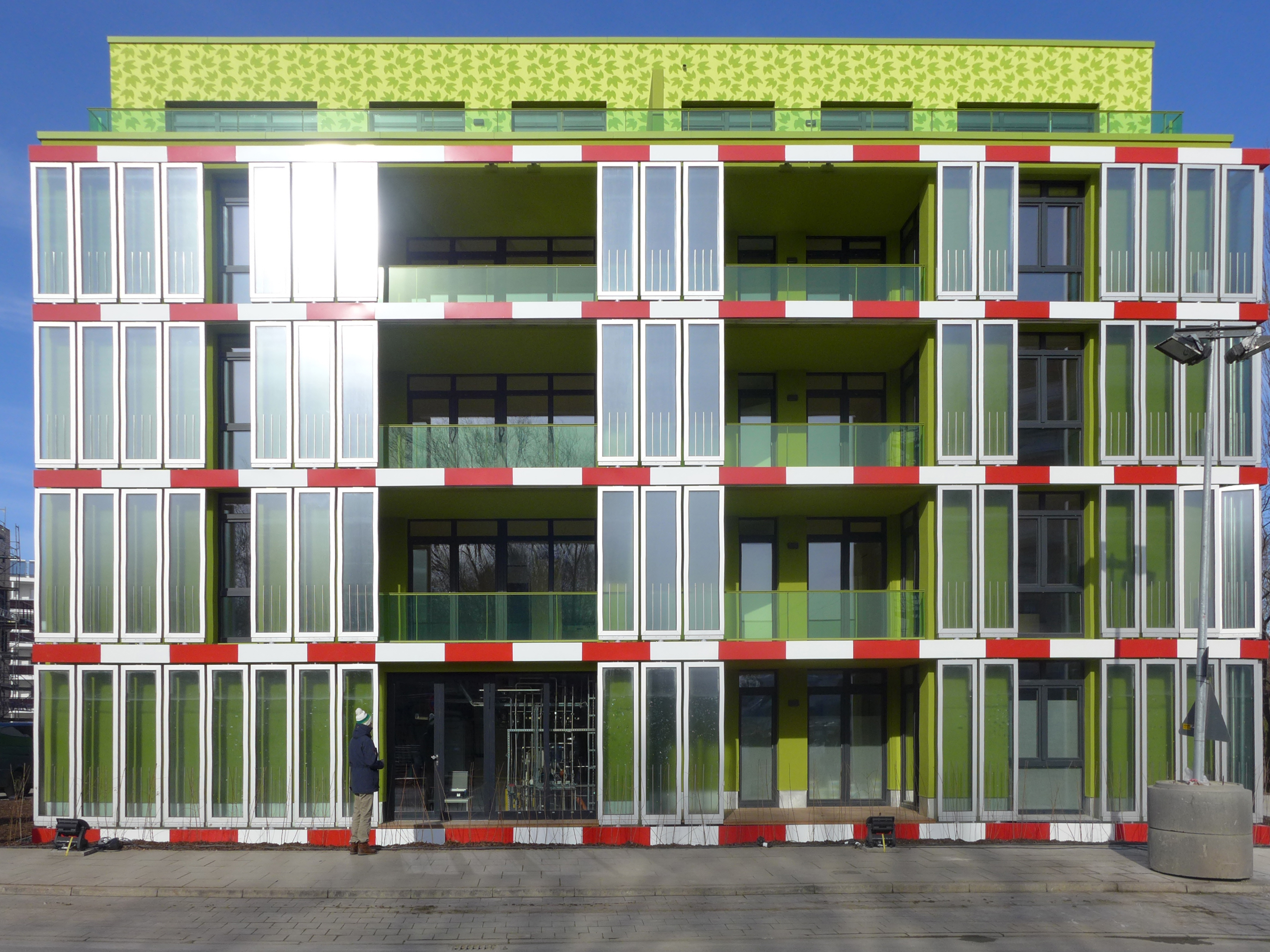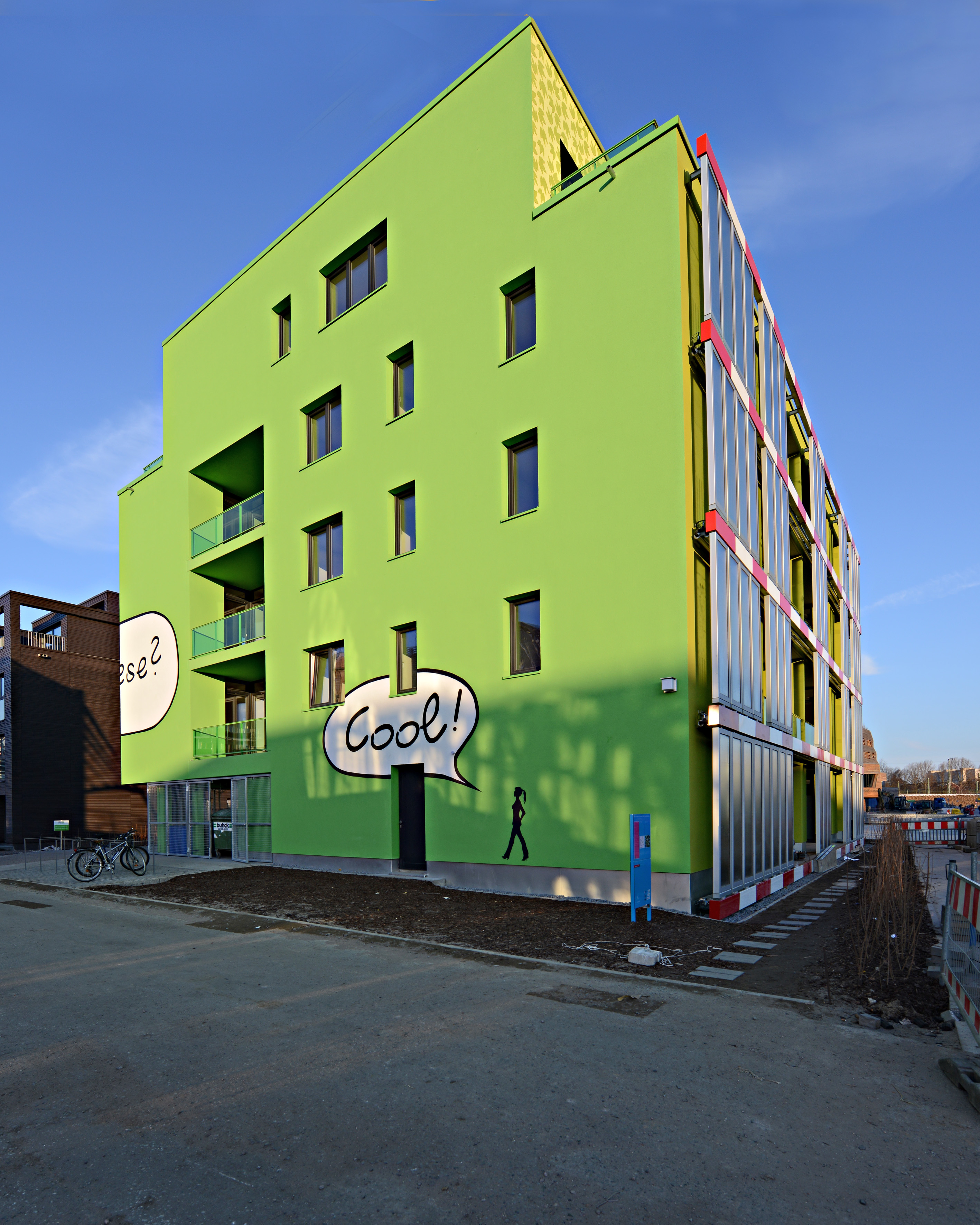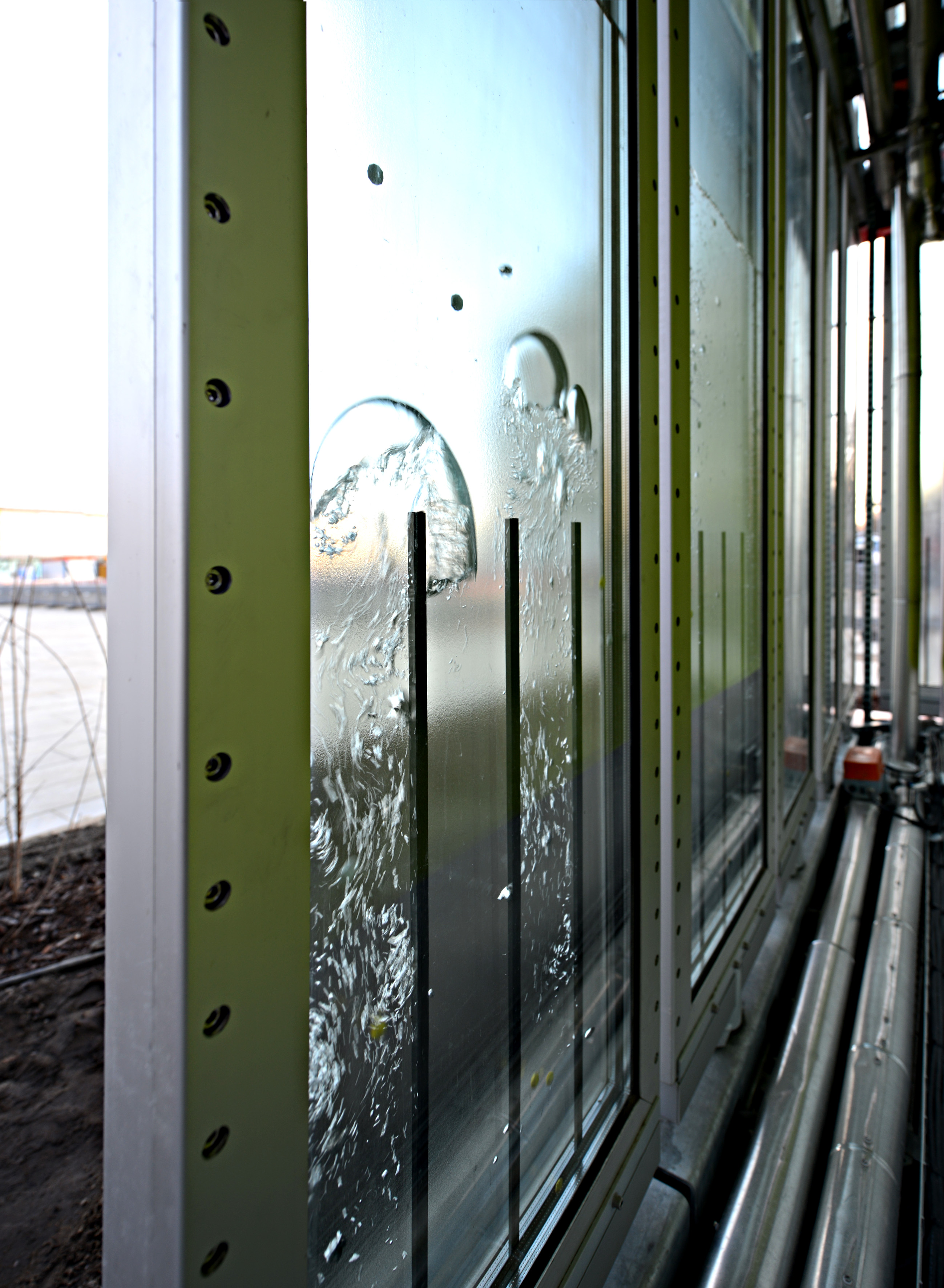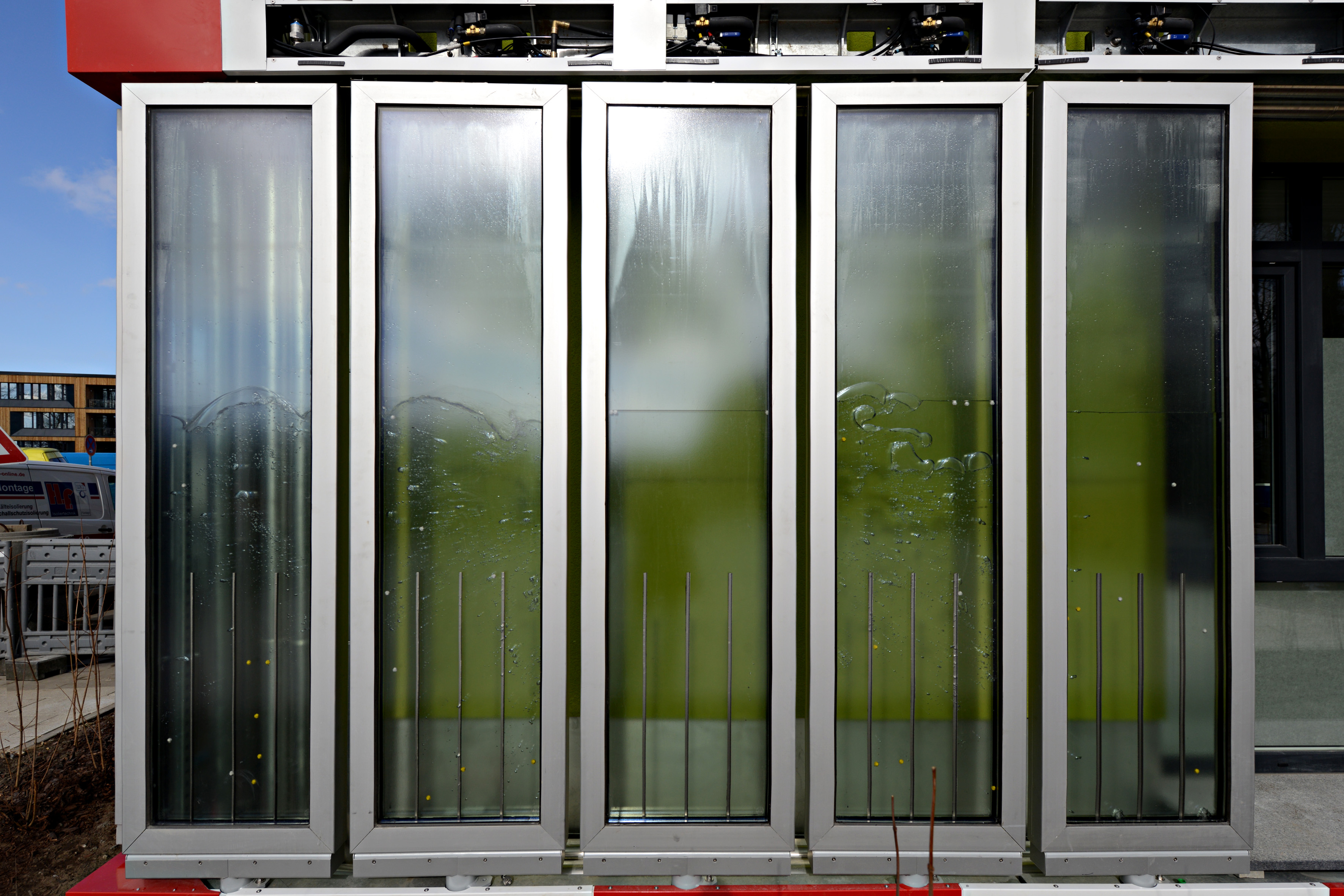The Zumtobel Group Award honors contemporary realised or conceptual works of exceptional innovative content, design, technology and construction. Submissions must make a significant contribution to greater humanity and sustainability in the built environment.
The winning project this year came from the Applied Innovations category--Arup Deutschland won with the "Solarleaf" facade system in Hamburg, Germany. The façade system was developed by Arup Deutschland in collaboration with SSC Strategic Science Consult GmbH and Colt International GmbH, with subsidies from the federal research initiative ZukunftBau. The system was first installed in a four-storey residential building that was designed by SPLITTERWERK architects for the 2013 International Building Exhibition (IBA) in Hamburg.
It showcases the first Solar-Leaf façade: a building integrated system absorbing CO2 emissions, while cultivating microalgae to generate biomass and heat as renewable energy resources. The environment for photosynthesis is provided by glass photobioreactors installed on the southwest and southeast elevations.
The SolarLeaf façade utilises the bio-chemical process of photosynthesis for energy efficient buildings and building clusters. There are three main benefits of the system: a) Generation of high-quality biomass for energetic use or as a resource for food and pharmaceutical industry (urban farming), b) generation of solar thermal heat and c) the use as a dynamic shading device.
Cultivating microalgae in flat panel photobioreactors requires no additional land-use and is largely independent from weather conditions, allowing installations in urban environments. A floatation device harvests the BIQ’s algal biomass automatically. The carbon required to feed the algae is taken from a combustion process in proximity of the façade installation to implement a short carbon cycle, preventing carbon emissions to contribute to climate change. Microalgae contain high-quality proteins, vitamins and amino acids that make it a valuable resource for the food and pharmaceutical industry.
The BIQ project is a milestone in opening up this value chain and creating a subsequent infrastructure. The developed bioreactors also capture solar thermal heat with an efficiency of approx. 50%. At the BIQ the heat is extracted by the use of heat exchangers and the temperature levels of the excess heat can be increased by using a heat pump for the supply of hot water or heating the building or stored geothermally. The system comprises bioreactor panels, associated mechanical services and the control unit to link the mass flows and optimize the efficiency of the building. The BIQ plays an important role in establishing surplus energy and zero carbon building clusters for the future.
© Colt, SSC, Arup
© Colt, SSC, Arup
© Colt, SSC, Arup
© Colt, SSC, Arup
© Colt, SSC, Arup


